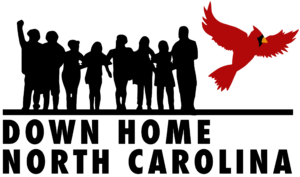Local budgets are a road map to a town, city, or county. Here are 5 key takeaways about the local budget, and how you can get involved.
1. A budget is a plan.
The budget for a local government is a roadmap of a community’s needs and priorities. For counties, municipalities (cities, villages, and boroughs), townships, special districts (such as water and sewage authorities, parks and recreation), and school districts, a budget projects revenue, costs, and future needs for services by all stakeholders – that’s everyone from government administration and employees to local business owners to residents like you. A good budget has thought about everyone during its creation and implementation.
A key part of our work at Down Home is making sure these budgets include priorities for working people.
2. Local budgets have an impact.

Local governments spend most of their resources on education, health, and social service programs. In 2017, about one-fifth of all state and local spending went toward combined elementary and secondary education (21%), and 22% of expenditures went toward public welfare. Public welfare includes spending on means-tested programs, such as Medicaid, Temporary Assistance for Needy Families, and Supplemental Security Income. Spending on health and hospitals was another 10% of state and local direct expenditures. Not all of these resources go directly to the people, but to the implementation of programs that offer assistance and public services.
3. It can get complex.
Budgets have to be organized and transparent, and major departments of the local government have a line-item budget that tracks every single dollar spent for personnel, operating, and equipment.
The first step of creating a local budget is identifying budget objectives and operating budget requests. Next, the chief executive (likely a city manager, town manager, or county manager) drafts a recommendation through their budget office. Each department collects internal input for budget requests. Meetings are held between executive stakeholders, and the chief executive drafts a budget for the legislative body (a city council, county council, or a county board) for their approval. Thirdly, all members of the legislative body review the budget in detail and host a budget hearing and information session for public input. While there are many steps along the way that we can influence a budget, this is the biggest point in the process. Only after community input and review, can the local legislative adopt the budget. After this, it’s the duty of the budget office to monitor expenditures and ensure that funds are spent as planned and intended.
At Down Home, we watch and stay vigilant that our elected and appointed officials are doing what they say they’re doing, and that they’re doing to right things by poor and working folks.
4. The People have a say!

In North Carolina, local governments are legally required to offer public hearings at both the state and local level. (Read more about this.)
YOUR engagement is key! Your community’s local budget directly affects your quality of life. From schools to social services to filling in potholes on the road in front of your house, the local government has a close proximity to our everyday life. In fact, local budget choices impact our day-to-day in a way that the federal government does not.
To build trust, buy-in, and a clear understanding of the community they serve, our leaders should solicit the input of community members throughout the budget planning process. No one knows a place better than its citizens.
That’s why organizing around our counties’ budget process is a key part of Down Home’s participation in the community. We are the public! We have to make sure our voice is heard in the budget process.
5. You have a right to look at the numbers for yourself.
Local officials are legally required to have that information publicly available, and it is the county/town manager’s role to manage the budget office. Many local governments house that information on a website, but the office of the chief executive should have that information readily available in print as well.
All public offices are also required to submit their financial statement to independent review in a report called a Comprehensive Annual Financial Report, or CAFR. A CAFR provides accurate and complete information concerning the office’s financial management, and gives insight into the finances of a city, county or state. Essentially a report-card of a city or a state, people can see how public funds are being managed by the government.
Interested in working to make sure your local budget is fair and serving the people? Join us at a local event near you.



